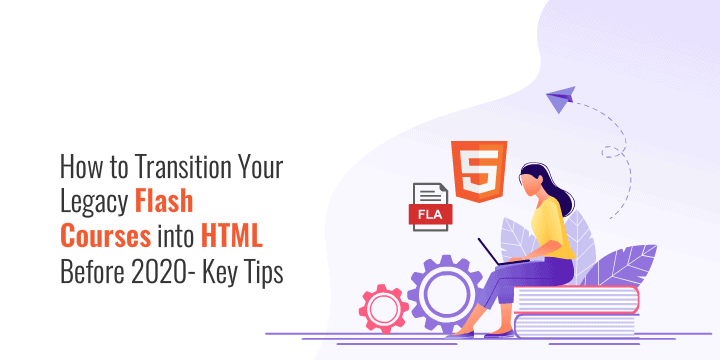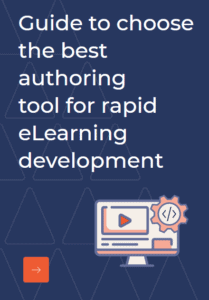The fact that Adobe itself will no longer support Flash, isn’t breaking news. Organizations with futuristic outlook and need for multi-device flexible learning resources that can be updated from time to time, have gradually taken up HTML5 based courses and have been working on converting the legacy Flash courses to HTML, that too before the clock strikes.
So, how do we go about? While we have discussed the roadmap for transition briefly, the whole process requires deeper understanding.
Basically, there are three ways to approach the whole Legacy Flash to HTML transition:
Migration:
Wherein the existing Flash content is converted to HTML format without changing the content, layout and overall interactions except for what the technological change calls for.
Migration with Enhancement:
In certain cases, the content may be outdated or need modifications but without changes in the instructional level and hence, the migration from Flash to HTML is done with few tweaks in the content alone. This could be to make the course more engaging, intuitive and interactive.
Redevelopment:
What happens if the content and the instructional methodology both need to be changed. Say for instance, an interactive that needs to be changed to a scenario-based learning solution with videos, interactions and all? Here a complete redevelopment is required and at times only a few parts of the existing course can be used as is. The content is updated, instructional designers then create the storyboard based on the new learning requirement and the course is redeveloped either using authoring tools or through custom development. Redevelopment ensures that the course is up-to-date, engaging and intuitive.
Based on our experience with handling many Flash to HTML conversions, here are four tips on how to smoothly transition the Legacy Flash Courses into HTML before 2020.
Tip 1# Check for Source Files
While many older courses may no longer have the original files or source files. The presence of source files can ease the work to a great extent. The files may include.FLAs, XML, media files such as audio and videos and the content can be directly extracted from it. This, in turn, can tone down the effort and time spent on recreating the necessary content otherwise.
Tip 2# Collate the Content
Source file or no source file, collecting the content or at least organizing it in a way that sorting the relevant files from the irrelevant ones is the best way to go about. Extract the necessary content and media from the legacy course. Copy everything to a Word/PowerPoint document or to the authoring tool framework for storyboarding. While this helps in chunking down the unnecessary content, it also helps in identifying the gaps. Adding the necessary content and updating the facts and stats as and where required at this stage helps in the instructional design stage.
Tip 3# Select the Development Method
So, how will the course be developed? Using Ready to use authoring tools or by custom development? Knowing the answer to this can help in collating the content directly to the respective authoring tool or the required format. Not just that, with authoring tools there are various readily available templates that can be utilized.
Tip 4# Redesign, Modify Templates
With everything in place, a good instructional approach is required to make the course suit the learner’s requirements. In many cases the legacy courses need to be completely redesigned to match the learner requirement, design style, interactions etc. Using templates make the designing process simpler as content can be directly imported and reused, or templates can be modified too and used across the course for consistency. Custom development, on the other hand, can be time-consuming and a tad bit costlier, but worth the effort if the organization’s learning requirement is unique.
Very often changes are put off thinking, “why the rush”, but that isn’t the case with Flash to HTML transition. The change ought to happen now, as all the technological advancements lead to it. While organizations with a relatively new repository of eLearning may not have much to worry about, the transition is more likely to impact organizations with a large legacy of Flash-based courses.
If your organization is looking into Flash to HTML transition and needs assistance for the same, we can help you out. Just Get in touch.



